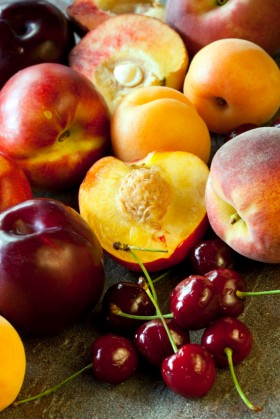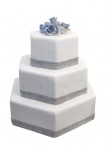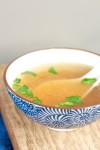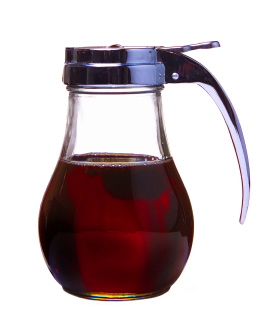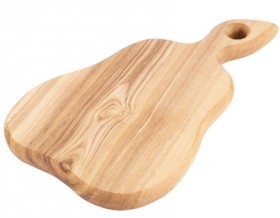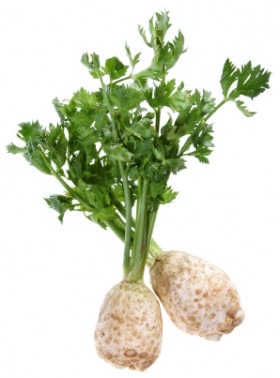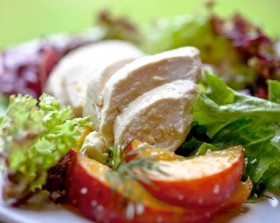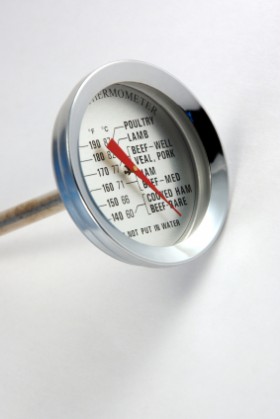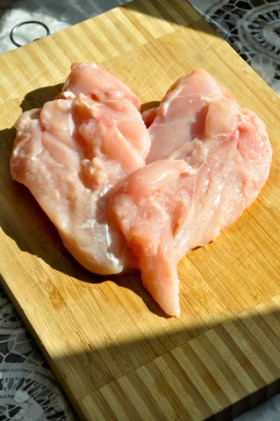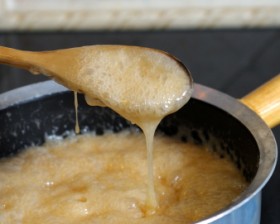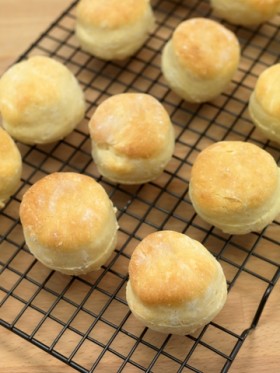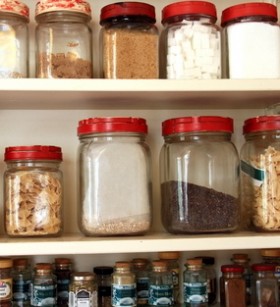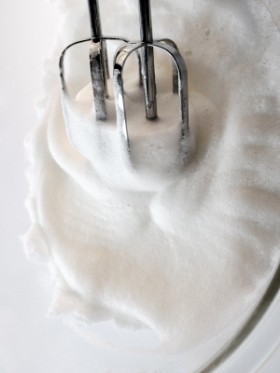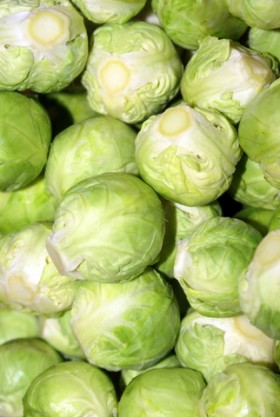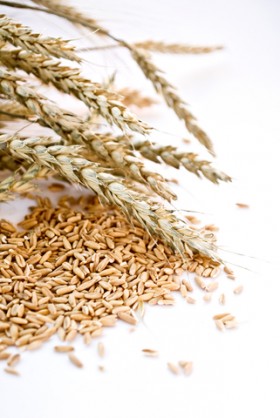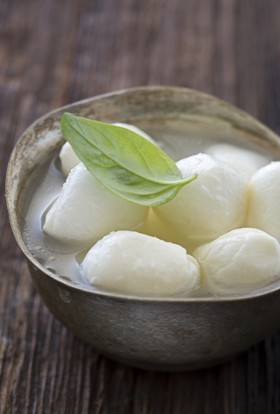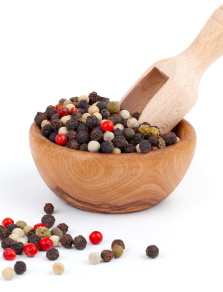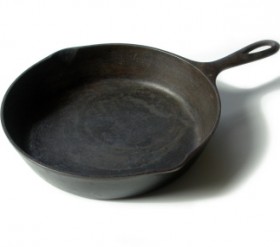
Kitchen Shrink
Fruit: Selecting and handling early summer fruit
Freshly picked apricots are the first “stone” fruit of summer. Shortly after they appear on the market, cherries, nectarines, peaches, and then plums arrive. Prompted by the warmth of the early summer sun each ripens in its own time. Fruits have different ripening agendas, some stop ripening when they are…
Buttermilk: Can you freeze buttermilk?
Gloria recently e-mailed the Kitchen Shrink to ask if she could freeze leftover buttermilk, thaw and use some, and refreeze the remainder. While buttermilk producers suggest that you not freeze buttermilk for best flavor and texture, when wasting it is the only other option, I suggest that you go ahead…
Wedding Cakes: Tips for making a wedding cake from a favorite recipe.
I recently got an e-mail from Joan saying, “Our family loves your gingerbread recipe. In fact, my daughter is getting married and I will be making your recipe as their cake. There will be 150 people. Any tips for making this quantity?” When I make this recipe for a crowd,…
Chicken Soup: How can I get more flavor in my chicken soup?
I recently got an e-mail from David who said “I am making chicken soup for my picky eaters, and . . . . the soup has little chicken flavor and no yellow color. . . . how can I get more chicken flavor and a pleasing yellow color in my…
Maple Syrup: What is Grade B Maple Syrup?
Marilyn e-mailed the Kitchen Shrink that she has a recipe that calls for Grade B Maple Syrup and wonders if she can substitute Grade A Maple Syrup as her supermarkets don’t have Grade B. Most maple recipes these days do call for Grade B Maple Syrup because this (usually late-season)…
Eggs: Is there an easy way to peel a hard-cooked egg?
I recently got an e-mail from Sandy asking if there is an easy way to peel an egg. She said, “I lose most of the egg when I do it.” Well, actually it has more to do with selecting the egg than peeling it. Very fresh eggs never peel well…
Cookie Dough: Are all cookie doughs freezer friendly?
Liisa recently e-mailed the Kitchen Shrink to ask “are all cookie doughs freezer friendly?” What a good question. It is so convenient to have already prepared cookie dough in the freezer so you can have freshly baked cookies on the table at a moment’s notice. All butter cookie doughs freeze…
Wooden Boards: What is the best way to clean wooden cutting boards?
I recently got an e-mail from Kitty asking, “What is the best way to clean wood cutting boards?” While there are lots of other choices in cutting boards these days, wooden boards are still very popular. According to the USDA, wooden boards are porous and should be cleaned after each…
Spices: All about fennel pollen.
Recently the Kitchenshrink has gotten several questions about fennel pollen, an intensely aromatic flavor enhancer that has shown up on restaurant menus in the past several years. What is it? How do you use it? Where can I get some? Here’s the scope. Fennel pollen is a golden dust brushed…
Celery Root or Celeriac: What is celery root?
I just got an e-mail from Ron asking me what celery root is and how to prepare it. I love to use celery root, either cooked or raw and have used it in all my books. Here is what I said about it in my latest book, Sara Moulton’s Everyday…
Chicken: How do you keep poached chicken moist?
One of the most frequent requests e-mailed to the Kitchen Shrink is, “Where can I find your method for poaching chicken breasts so they will be moist?” I have been asked for that technique so often that I put it right up front in the “Head Starts” chapter of Sara…
Meat: At what temperature is meat safely cooked?
I recently got an e-mail from Linda asking how long to cook a turkey meatloaf. As I took a look at several of my meatloaf recipes, I was reminded that there are slight differences in the final safe temperature depending upon the meat used, and big differences in the cooking…
Chicken: How to remove the tendon from chicken breast tenderloin
I recently got an e-mail from Ruth saying, “Years ago I saw one of your TV shows and you were talking about a trick to get rid of that hard little “nub” on the end of a chicken tenderloin; well my mothering duties called and I never heard about it…
Frosting: Why soda in caramel frosting?
I recently got an e-mail from Dean asking why some recipes for cooked Caramel Frosting (the kind without confectioners’ sugar, also called Caramel Fudge Frosting) call for baking soda and some don’t and wondering, “What is the reason for using baking soda and what is the difference in the outcome…
Biscuits: How can you make your own biscuit mix?
Sharon e-mailed the Kitchen Shrink to find out how to make homemade biscuit mix. You will find a number of recipes on line for a homemade substitute for commercial biscuit mix but you can actually just use your favorite biscuit recipe, combine the flour, sugar, baking powder, and salt in…
Pantry: What should you have in a well-stocked pantry?
I frequently get e-mails asking which items are essential when stocking your pantry. Here is my list. I am loosely defining the pantry as things you should keep on hand–not only in your cupboard (the literal pantry), but also in the fridge, the freezer, the dry vegetable bin and the…
Meringue: How to make a hard meringue pie crust.
Jane e-mailed the Kitchen Shrink for help making a hard meringue crust for her chocolate pie. She said, “As much as I whip it up, it shrinks while baking. What can I do to keep it from shrinking? If it is a dry day and you have headed all the…
Wedding reception: How can you plan a special yet affordable wedding reception menu?
Last week I received an e-mail from the mother of a bride asking for help planning the menu for her daughter’s wedding reception. She wanted the meal to be one that everyone would enjoy but needed it to stay within a moderate budget. My suggestion is to create a theme…
Brussels Sprouts: What is the best way to cook Brussels Sprouts?
Theresa e-mailed the Kitchen Shrink that the Brussels sprouts in the market look especially good this year but she doesn’t know how to cook them so that her family will like them. Too many people have memories of Brussels sprouts that have been boiled until they are gray. There are…
Grains: Which grains contain gluten?
Gluten is the name for the protein in grains. All grains contain protein that is theoretically gluten but people with celiac disease and most other gluten allergies only react to the form of gluten found in wheat (including spelt, kamut, triticale and all varieties of wheat), barley, and rye. While…
Food Safety: Is the food coloring in Red Velvet Cake safe?
I recently got an e-mail from Alberta saying, “Years ago there was a warning about using too much of a red food dye (#4 if I remember correctly). I never made red velvet cake for my family because of this warning. Since red velvet cake has made a comeback, I…
Cheese: Fresh or processed mozzarella?
I recently got a question from Frank who wanted to make fried mozzarella cubes that are light, smooth, and stretchy “like eating a toasted marshmallow” rather than heavy and chewy. I told him that the secret is in the mozzarella and he may have to try several kinds before he…
Peppercorns: All about peppercorns
When I am freshly grinding pepper during a demo I often get questions about the different types of peppercorns and their origins. Real peppercorns are the berries that grow in grapelike clusters on the Piper nigrum plant, a climbing vine native to India and Indonesia. They are processed differently to…
Cookware: Caring for Cast Iron
I recently got an e-mail from Terry asking why I often recommend cast iron skillets. She said she finds hers hard to take care of. I am such a fan of cast iron that I devoted a whole page in Sara’s Secrets for Weeknight Mealsto it. Here’s an abbreviated version…

